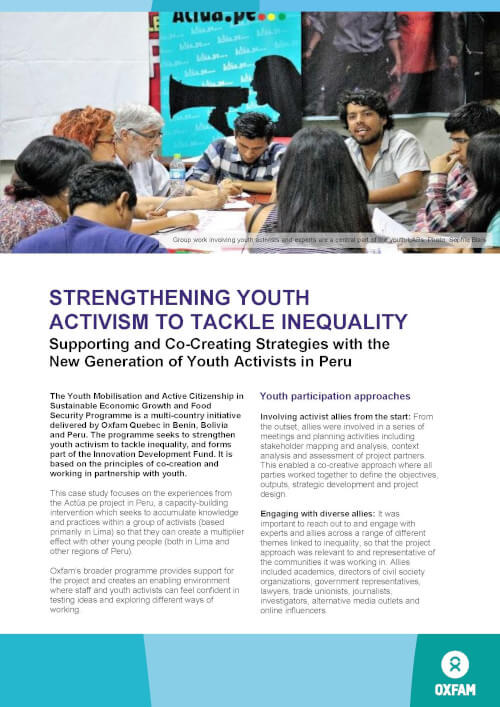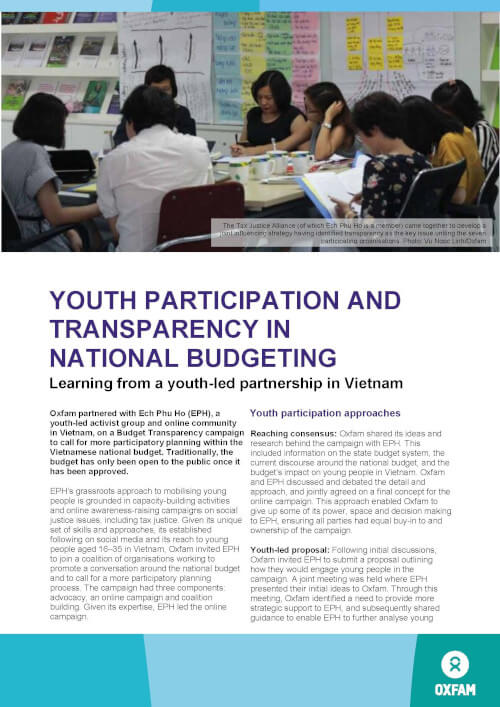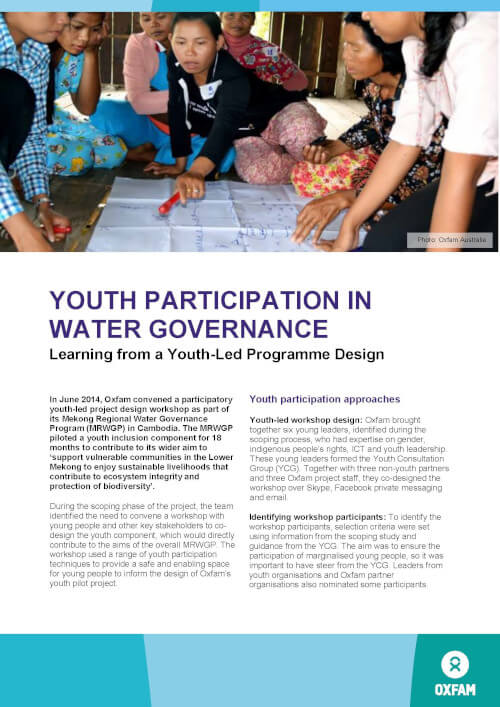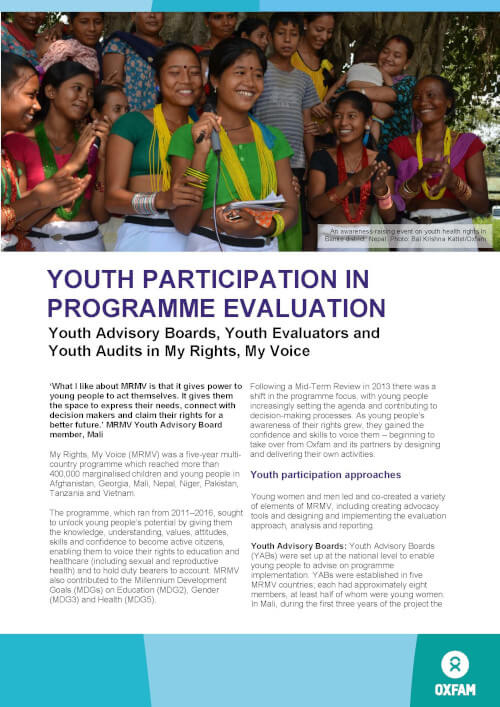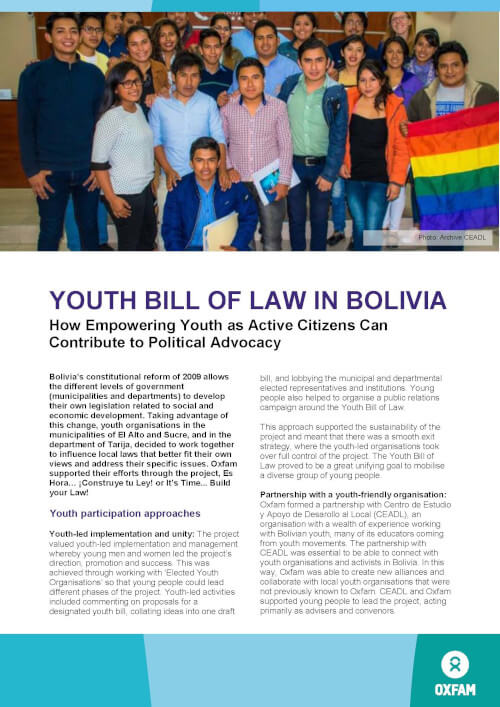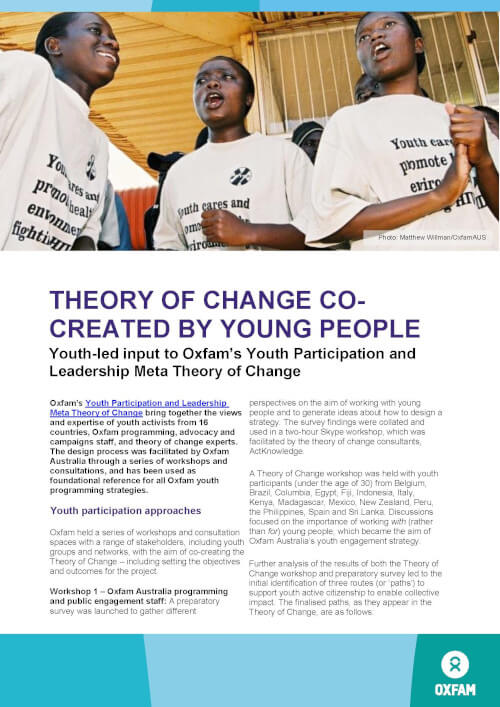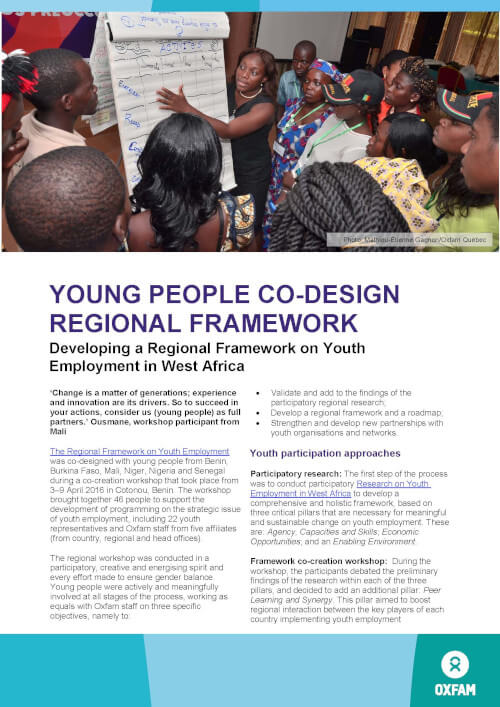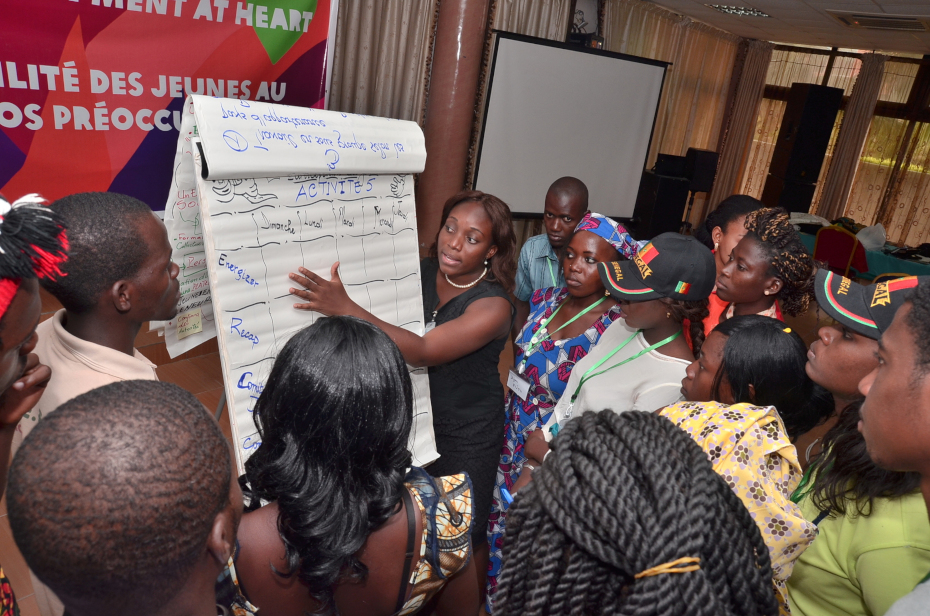Young people constitute 1.8 billion of the global population, yet they remain largely marginalised and excluded from local and global political and economic processes. Oxfam strongly believes in the power and potential of these young women and men to be a tremendous force for change, but this requires strengthening youth participation at all levels of society.
Oxfam’s 12 ways towards youth-led programming infographic illustrates how to go from programmes developed for young people, to working with them and on projects led by them.
This page pulls together a series of case studies to explore key learning from this approach and inform future programme design and ways of working with youth as co-creators, collaborators and partners.
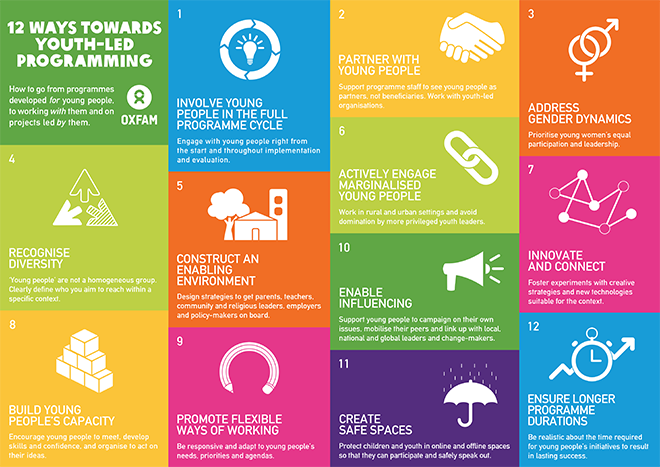

INVOLVE YOUNG PEOPLE IN THE FULL PROGRAMME CYCLE
Engage with young people right from the start and throughout implementation and evaluation. See the case studies below for examples of this approach in action.

PARTNER WITH YOUNG PEOPLE
Support programme staff to see young people as partners, not beneficiaries. Work with youth-led organisations. See the case studies below for examples of this approach in action.

ADDRESS GENDER DYNAMICS
Support programme staff to see young people as partners, not beneficiaries. Work with youth-led organisations. See the case studies for examples of this approach in action.

RECOGNISE DIVERSITY
Young people are not a homogenous group. Clearly define who you aim to reach within a specific context. See the case studies below for examples of this approach in action.

CONSTRUCT AN ENABLING ENVIRONMENT
Design strategies to get parents, teachers, community and religious leaders, employers and policy-makers on board. See the case studies below for examples of this approach in action.

ACTIVELY ENGAGE MARGINALISED YOUNG PEOPLE
Work in rural and urban settings and avoid domination by more privileged youth leaders. See the case studies below for examples of this approach in action.

INNOVATE AND CONNECT
Foster experiments with creative strategies and new technologies suitable for the context. See the case studies below for examples of this approach in action.

BUILD YOUNG PEOPLE’S CAPACITY
Encourage young people to meet, develop skills and confidence, and organise to act on their ideas. See the case studies below for examples of this approach in action.

PROMOTE FLEXIBLE WAYS OF WORKING
Be responsive and adapt to young people’s needs, priorities and agenda. See the case studies below for examples of this approach in action.

ENABLE INFLUENCING
Support young people to campaign on their own issues, mobilise their peers and link up with local, national and global leaders and change-makers. See the case studies below for examples of this approach in action.

CREATE SAFE SPACES
Support young people to campaign on their own issues, mobilise their peers and link up with local, national and global leaders and change-makers. See the case studies below for examples of this approach in action.

ENSURE LONGER PROGRAMME DURATIONS
Be realistic about the time required for young people’s initiatives to result in lasting success. See the case studies below for examples of this approach in action.


